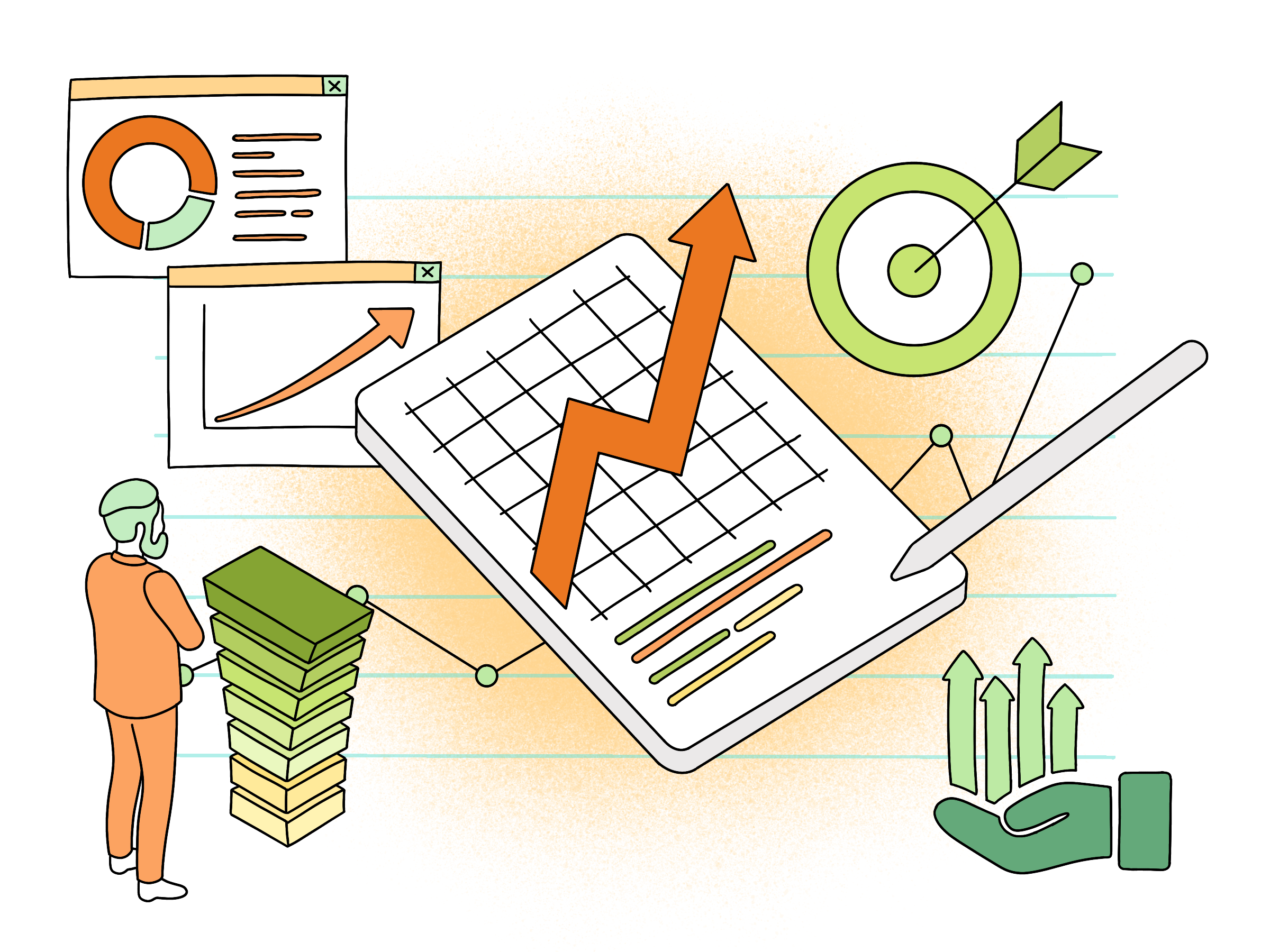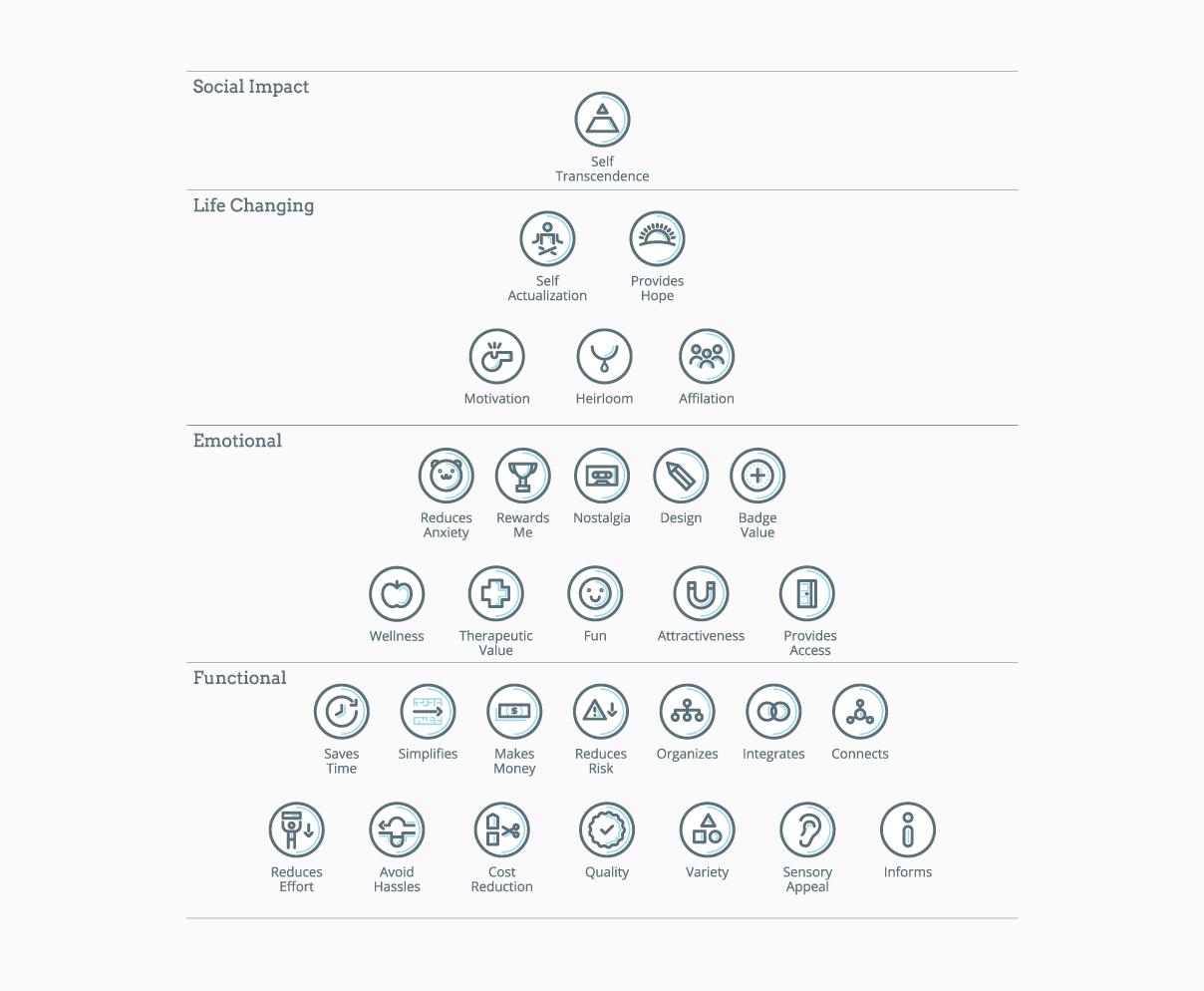
The Elements of Value
A lot goes into the psychology of deciding to buy a product than just weighing the price. The foundation for our Product Strategy is strongly based on the elements of value featured in the Harvard Business Review. The study concludes that companies that made an effort to improve their perceived value in those selected elements experienced accelerated growth. I’ll try to explain the different components of this model and how it can help you and your team align and focus resources to develop the best product in the market.
Perceived Value
For the longest time, marketers have focused all their efforts only on analyzing and managing the price side of the buying process as the only solution to boost profits. However, recent studies show that when a customer evaluates a product to purchase. A product’s perceived value plays one, if not the most important role in this process.
Understanding the true value of a product is extremely complicated due to its psychological and highly personal nature. Basically the amount of value in a particular product lies solely in the eye of the beholder. Yet, the same research shows that there are functional and emotional elements that are associate with a product’s value.
Although it’s hard to pin down value, it can be a cornerstone of successful marketing when done correctly. So it’s important to try to understand which elements shape your product's core value to improve it and stand out from the competition.
The Elements of Value Pyramid
To understand Product Value, the Harvard Business Review created The Elements of Value. Their research determined 30 elemental “building blocks” of value that drive the customer’s decision-making process. They are a range of external and internal needs consumers seek to meet.
These building blocks are usually represented in a pyramid and fall into four different categories: functional, emotional, life-changing, and social impact. At the bottom are the values associated with the most common physical needs. And the higher up the pyramid you go, the more complex and harder to implement the elements became until you reach the self-transcendence level.
The Harvard Review study shows that the higher the elements you choose and deliver, the faster you’ll be able to grow and have profit. But it’s important to understand that to be able to deliver on these higher-order elements; you first need to have a strong foundation and provide at least some of the functional elements. If those basic values aren’t met, you can’t make an emotional and psychological connection with your customer. For example, the classic single speed bike can only give its customers a nostalgic feeling because it already checks the quality element.
I previously mentioned in a blog post about the importance of Product Positioning and how it can help you focus on certain features of your product to stand out from the competition. The elements of value can give you a blueprint of what customers are looking for when they assess the value of a product. Depending on what industry you’re in and your target, some of these elements will be more important than others. So during the Product Strategy phase, you need to identify and come up with the right combination of building blocks that are the most important for your industry and your product to deliver the best value.

Functional Product Values: Level 1
Although all four value categories are important, having functional elements is a necessity because they provide practical and useful value.
Saves Time: achieves something faster.
Simplifies: makes some action or process easier.
Makes Money: has monetary benefits.
Reduces Risk: shown to be the safest choice.
Organizes: helps you to organize something complex.
Integrates: it’s able to integrate different aspects of a process.
Connects: connects with other people.
Reduces Effort: helps you to get things done with less effort.
Avoid Hassles: reduces or avoids a problem.
Cost Reduction: saves money in any type of monetary transaction
Quality: provides high-quality goods or services.
Variety: provides a wide variety range.
Sensory Appeal: appeals to one or several senses.
Informs: provides reliable and trusted information.

Emotional Product Values: Level 2
You’ll need emotional value elements to connect with your customer and give them a certain feeling that makes them comfortable to purchase your product.
Reduces Anxiety: helps you to feel more secure and less worried.
Rewards Me: provided benefits and special offers.
Nostalgia: reminds you of something positive in the past.
Design: has a visually appealing form.
Badge Value: represents a certain aspiration or status.
Wellness: improves physical or mental state.
Therapeutic Value: provides therapeutic well-being.
Fun: offers some type of entertainment.
Attractiveness: helps you to feel more attractive.
Provides Access: gives you access to exclusive and valuable items.

Life Changing Product Values: Level 3
When your product offers life-changing value elements, it means that you promise your customers a personal transformation of some kind.
Self-Actualization: provides a sense of personal accomplishment.
Provides Hopes: gives you a sense of optimism about something.
Motivation: help you to achieve a certain goal.
Heirloom: it seems like an investment for a future generation.
Affiliation: gives you access to a community.

Social Impact Product Values: Level 4
At the top of the pyramid, you are delivering value that does not only affect your customer but some group at large.
Self Transcendence: helps other people.





